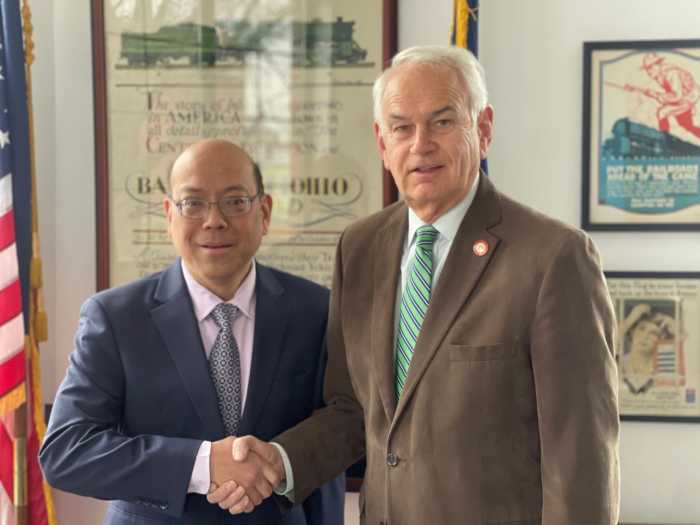By Kelley Tice
After seeing “An Evening of Lorraine Hansberry's Work,” which took place at the Theater in the Undercroft at the Trinity Lutheran Church in Astoria Friday night, you cannot help but think that the late playwright has become a victim of her own defiant spirit.
In the process of shaking loose the shackles of race and gender to become an artist, Hansberry, who wrote the plays “A Raisin in the Sun” and “A Sign in Sidney Brustein's Window,” freed herself from race-specific themes to herald universal ones. By doing so, some would say, the very core of her brilliance was lost.
Hansberry, a black woman married to a white man, died of cancer in 1965. Just six years before, at the age of 29, Lorraine Hansberry became the youngest American woman and first black to win the New York Drama Critics Circle Award for the best play of the year (“A Raisin in the Sun”).
In Friday night's work in progress, the Trinity Players paid tribute to Hansberry by reading excerpts from her two most well-known plays, using the words from her ex-husband's essay, “The 'Final' 101 Performances of A Sign in Sidney Brustein's Window,” as the running narrative to tie it all together rather than her own autobiographical book, “To Be Young Gifted and Black.” As a result, Kevin Hauver, who played Hansberry's husband, Robert Nimeroff, dominated the stage for the evening and turned Hansberry and Ayesha Hakeem, the actress who played her, into a bit of a comical mime.
The special presentation interweaves poignant scenes from “A Raisin in the Sun” and “The Sign in Sidney Brustein's Window” into Nemiroff's running narrative, which provides some interesting insights about the times. On the day “The Sign in Sidney Brustein's Window” opened at the Longacre Theatre on Oct. 15, 1964, Soviet leader Nikita Khrushchev fell from power and China set off its atom bomb not far from a place called Vietnam.
At the same time, Nemiroff's narrative reveals that in Hansberry's waning days the therapy to treat her cancer was unsuccessful. “And though we remained close, our marriage had failed,” he says, speaking through Hauver.
Despite its aptly served historical context and personal insight, the narration, along with sporadic excerpts from drama critics, nearly overshadowed the enduring brilliance of Hansberry's own words. But not quite. Two dialogues from “A Raisin in the Sun” and monologues from “A Sign” rescued Hansberry from near silence in the work dominated by her husband's words.
For example, two excerpted scenes from “A Raisin in the Sun” that feature Beneatha and Asagai remind us how Hansberry simultaneously deals with issues of black and female identity always as a defiant intellectual and artist.
In the early scene, Asagai, a Nigerian student, visits Beneatha, the younger daughter who is studying to be a doctor. Well acted by Leah Burnette and Dirk Smile, Asagai admires Beneatha, who is draped in an African robe. He says to her “you wear it well – very well – mutilated hair and all.” In protestation, Beneatha shoots back that it is not mutilated, and upon prodding that “it's so hard to manage when it's, well – raw.”
Asagai, an African coming to terms with African-American identity says “and to accommodate that – you mutilate it every week?” Foreshadowing the black cultural movement by at least a decade, Hansberry raised this issue as early as 1959.
Later, in the same scene, Hansberry waves the flag of feminism in one sentence and wryly critiques it in the next.
Beneatha answers Asagai's feelings with her own revelations: “You see! You never understood that there is more than one kind of feeling which can exist between a man and a woman –

































